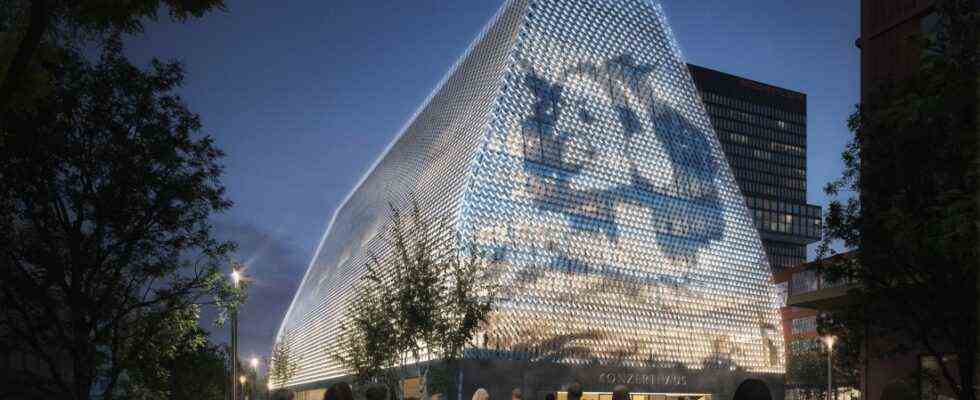There are dreary questions in the Causa Konzerthaus and there are exciting ones. Who should pay for that? This, for example, has to be answered in one layer: the same citizens whose tax money would otherwise be spent on things like the expansion of the existing Swiss franc expressway (660 million). There is more music in asking about those details that could lead to the 580 million euros that the planners currently estimate for the construction of the concert hall being worthwhile. For example because the building in the Werksviertel will thus represent a real, perhaps hardly measurable, enrichment for Bavaria – aesthetically, functionally and socially.
This week, Art Minister Bernd Sibler and representatives of the building ministry informed the state parliament’s budget committee about the details. Most noticeable: the new concept for the facade. This is to be given a surface in parts that can be played with digital images and to make visible what is going on inside – factually and figuratively. Because it could not only show camera images from the building’s belly, but above all light art.
This further development of the original idea of the architects Anton Nachbaur-Sturm and Andreas Cukrowicz is interesting. The competition jury was particularly impressed by its design because of the transparency of the glass outer shell. According to Cukrowicz, this should make it possible “to be normal in everyday life in order to outshine the city in special moments” – that is, if everything in it were brightly lit at night. From the point of view of the decision-makers, the cultural “lighthouse” that the state capital wanted was perfect. But in the course of the previous planning, the glass structure had revealed pitfalls in terms of air conditioning. And yes, the intention is to build a “culture store” (Anton Nachbaur-Sturm) and not a greenhouse that would have had to be massively cooled at times.
So the architects now choose a multilayer structure for the building envelope. According to the building ministry, “as in the competition design, an elemented and, where functionally necessary, opaque glass facade is planned in front of the outer load-bearing walls and supports”. It still allows “high levels of daylight” deep into the building and many “indoor-outdoor connections”. The other facade walls apparently no longer do this. In order to nevertheless create “a homogeneous architectural appearance”, the architects now planned to wrap the entire building in a “glass dress”. At the current state of planning, this dress is designed as a “rear-ventilated shading construction made of glass elements”. The LED elements for media display on the shell can then be integrated into this.
Above all, the large concert hall should be one thing: modern.
The architects developed this new facade concept together with the internationally active planning office Knippers Helbig from Stuttgart – and it acts as a figurehead for a high-tech interior. “How important good digital equipment is for a concert hall of the future”, that the past months of the pandemic would have shown very clearly, said Sibler at the presentation in the state parliament. This digitization continues inside. In the small concert hall, for example, which will be below the large one in the cross-section of the building and which is designed in an oval shape. So very similar to the Pierre Boulez Hall in Berlin. It was inaugurated in 2017 at the Barenboim Said Academy and garnered a storm of enthusiasm for its acoustic qualities and the special opportunities for interaction between musicians and with the audience. The Berlin hall holds a maximum of 682 spectators, the Munich hall should offer 400 seats.
The small concert hall, which will be below the large one in the cross-section of the building, will be designed in an oval shape.
But Bavaria’s building ministry is unimpressed by the comparison with the Berlin hall. “Event buildings with a circular or oval arrangement of the audience seats were already known in the Middle Ages (Globe Theater),” says a spokesman. The Munich hall is above all modern: playable wall surfaces transform it “in the interplay of audio systems and LED technology as well as digitally playable filter structures into a 360-degree audio-visual environment”. Sounds cryptic, but good.

